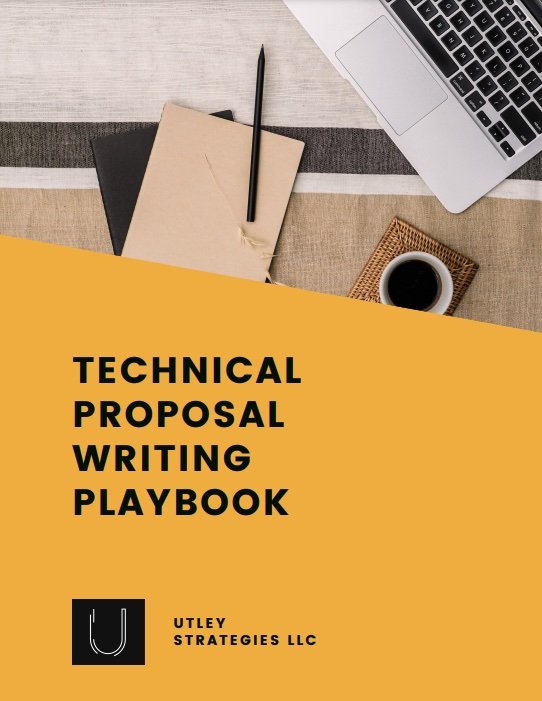4 Quick Tips to Make Your Proposals Look Professional
Out of all of our clients, about 90% cite a fear of having an unprofessional proposal as the reason for seeking help. If you’re in a similar situation, there are a few steps you can take today to make sure your proposals look professional.
Use Consistent Branding
Incorporating your company’s branding is the easiest and most basic way to ensure your proposal is professional. There are three main areas to consider when adding your branding to your proposal:
Color
Outside of your logo, your company colors are a key way to spark recognition with the reader to help them to remember your company and offerings. Most companies have 2-3 brand colors that are incorporated into the proposal content. If you have more colors as part of your branding, then stick to three colors when designing your proposal or work with a professional designer to ensure the colors are incorporated properly and don’t overwhelm the reviewer.
Many small businesses have a logo but no formal brand colors or guidelines. If this is you, don’t worry! You can upload your logo to coolors.co’s color palette generator. The eyedropper tool allows you to find out the exact color codes for the colors in your logo, and you can download this as a PDF or JPEG to save for later. Once you have your colors, incorporate them into your proposal template. As mentioned above, stick to two or three colors.
The Three Colors Needed in Your Proposal
Below are the types of colors you’ll need:
One color for body text, typically a black or dark gray.
One primary color. This is typically a part of your logo and key branding color for your company.
One secondary color. This will be used less frequently and is perfect for callouts, bolded text, or other aspects where you want to draw attention.
Text
Similar to color, text is a key way to make your proposal look professional and engaging. Because proposals include a lot of text, it is critical that you choose fonts that are easy to read. Additionally, avoid any custom fonts that require a license or aren’t standard on most computers. This will help you avoid technical issues and ensure that the reader is able to review your proposal easily.
As a rule of thumb, follow these guidelines for your text:
Font Size: Keep font size of body text between 10-12 point font.
Style: Arial or Times New Roman are both easy to read when printed or on a computer. If you respond to RFPs, one of these may be required.
For Arial, use a size 10 or 11. For Times New Roman, go with 11 or 12.
If you aren’t a designer, stick with one of these two styles to ensure that your proposal is easy to read and you won’t encounter any issues when saving your file as a PDF.
Style
Style is less straightforward than color and text, but it encompasses both as well as your content. Your proposal style should reflect your company brand and align with any other materials you have, such as sales decks, handouts, or your website. For example, if your website incorporates a lot of yellow and high quality photos, then your proposal should as well. If your website is only cartoon drawings of your process, then use those in your proposal, not photographs. This consistency creates trust and convinces your potential clients that your company is professional and can handle the work.
Incorporate White Space
A fundamental principle in design, white space is key to making your proposal easy to review. If you aren’t familiar with the term, white space is the part of your proposal that has no text, images, or styles. It doesn’t necessarily have to be white, but since most proposals have a white background, that tends to be the case.
White space gives the reader’s a break from the text and allows you to draw their eye to key points. Done well, white space allows your reader to take away your biggest differentiators without reading every word on the page. This is ideal since most reviewers will skim your proposal looking for key information.
Easy ways to incorporate white space include:
Inserting headings to split up text
Break long paragraphs into multiple shorter paragraphs
Incorporate bullets for lists or to show several ideas side by side
Have space before and after each paragraph, heading, section, etc.
Have Clear Sections
One common mistake many companies make is to develop proposals that are one long, lengthy document with only a few clear sections, such as pricing and company overview. To make your proposal easy to read and clear, break each section into subsections that clearly explain what you do and the benefit to the customer.
For example, instead of having a single Scope of Work section, break that section down into phases or stages of the project. This makes the project more manageable and easier to evaluate your process.
The same is true for product proposals. Instead of having one long list of specifications, group these together.
Leverage sections wherever possible to make it easy for evaluation.
Use Quality, Updated Graphics & Images
While incorporating graphics and images will enhance your proposal content, if these are old or low-quality, it can actually make your proposal less professional. For graphics that you use frequently, work with a designer to update and modernize for use in proposals. All images should be of high enough quality that they aren’t pixelated and the styles should reflect that they are recent photos, not twenty years old (unless it’s a history section).
Download the *FREE* Technical Proposal Writing Playbook to improve your proposals today!
Next Steps
Now that you know how to easily make your proposals professional, it’s time to incorporate these tips! Whether you’re designing in Word, InDesign, or using a proposal software, all of these tips can be applied to improve your proposals today.



